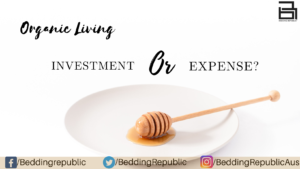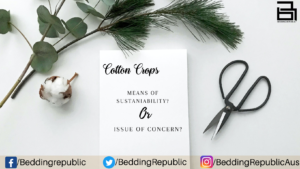Every day we make choices in our lives that affect the climate, the environment, and other species. Everything we do in our day-to-day lives has an impact on the planet, from the clothes we wear to the food we eat. To make sustainable living more accessible, it can be incredibly daunting to make the necessary changes in our lifestyles to reduce our carbon footprints that can protect the Earth for future generations.
You can take your first baby steps towards eco-friendly practices to make small changes that could help you live a more sustainable lifestyle. Let’s find out everything you need to know about sustainable living.

WHAT IS SUSTAINABLE LIVING?
Sustainable living is the practice of reducing the use of the Earth’s natural resources and one’s personal resources instead of depleting environmental resources and creating excess waster for future generations. To live a sustainable lifestyle, you should try to reduce the amount of Earth’s natural resources that you use to help protect it and to have as little of an impact on the Earth as possible.
WHY IS SUSTAINABLE LIVING IMPORTANT?
Sustainable living improves the quality of our lives, preserves natural resources, and protects our ecosystem for future generations. Sustainability is extremely important in terms of environmental protection, social development, and economical development because sustainable living:
- Conserves natural resources
- Improves air quality
- Slows climate change
- Assist economic development
- Improves community health
- Maintains resources for future generations

6 SIMPLE WAYS TO ACCESS SUSTAINABLE LIVING
There are a number of ways you can live sustainably including limiting the amount of energy you consume, changing your diet, using eco-friendly products, and adjusting the transportation you use. To live a more sustainable life, you don’t have to make a massive shift in your choices at once. It takes a lifestyle change that’s a lifelong journey of learning, failing, experimenting, starting again, and winning.
So, if you want to live sustainably but you don’t know how to start, try following some of these tips:
1. SAVE ENERGY
By using energy wisely, you can help to reduce carbon emissions. There are several ways you can save energy at home including switching to LED lighting or CFL bulbs instead of incandescence lights, switching off standby appliances, turning off your lights when you leave a room, hanging clothes to air dry instead of using a drier, and opening up your blinds to use the natural light in the day time.
2. GO PLASTIC-FREE
Plastic never goes away and damage the natural ecosystem immensely. Every year thousands of sea turtles, seals, seabirds, and other marine mammals are killed after ingesting plastic. You can cut down on your plastic waste by these simple steps: use reusable bags when you shop, avoid buying plastic-wrapped products, ditch single-use plastic straws, water bottles, bags and stop lining trash bins with plastic.
3. DON’T WASTE FOOD
Throwing away edible food not only just wastes money but this discarded food when sent to landfills, rots, and produces methane gas, which is a greenhouse gas. So wasting your food contributes to climate change. Avoid buying more food than you need, eat your leftovers, keep your fridge clutter-free, store food correctly to avoid food spoilage, preserve food, and keep a food waste journal to track the items that get thrown away over time.
4. SAVE WATER
You can save water by making a number of small changes. Close the taps whenever not in use, while brushing your teeth, shaving, lathering your hair, or cleaning kitchen utensils. Take a shower instead of a bath as the shower uses 50% less water. Taking 5 mins showers can save around 3,500 litres a month. Collect rainwater and water your plants late in the evening or early in the morning to avoid water evaporating before it sinks in.
5. THINK TWICE BEFORE SHOPPING
Every product that we purchase has an environmental footprint, from the materials used to manufacture the products to the pollution emitted during production to the packaging that ends up in landfills. So before making a purchase decision, ask yourself if you really need it. If you do, then consider buying from sustainable brands and look for minimal packaging and shipping.
6. EAT LESS MEAT
Livestock farming is one of the leading contributors to climate change. Raising livestock animals generates greenhouse gas emissions and also extensive cattle ranching causes deforestation. So, a diet heavy in meat not only increases the risks of obesity, heart disease, and cancer but also makes the planet sick. You are not needed to completely give up animal products! You can reduce the level of meat in your diet and develop a meat consciousness.

A sustainable lifestyle doesn’t mean living without luxuries but rather reducing unnecessary waste and being aware of your resource consumption. So by making little changes in our lifestyles, we can take baby steps to make our lives more sustainable.
Do you know? Two in 5 Australian consumers are willing to pay more for sustainable brands and millennials appear to be more sustainably conscious. Click here to find more about this on our blog about “Importance and need of ethical sourcing in textile industry”.
Find the related posts on our Instagram!




